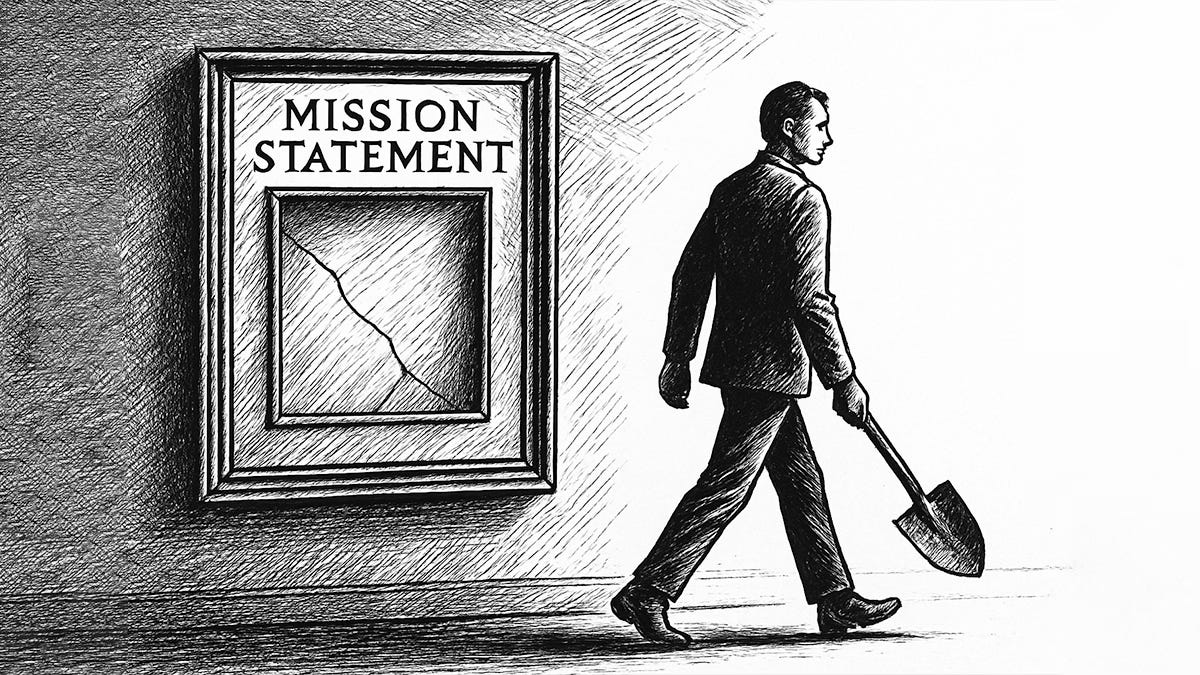The Belief Deficit: Why Most Leaders Will Never Build What Matters
The biggest gap in business today isn’t innovation, capital, or strategy. It’s conviction.
Your mission statement sits framed on the wall.
Your purpose anchors your brand guidelines.
Your values decorate your job descriptions.
But none of it matters if you’re faking it.
That’s the truth most leaders don’t want to face.
Because most organizations don’t have a belief problem.
They have a courage problem.
When Belief Gets Real
When Dr. Bronner’s caps executive salaries at five times the lowest-paid position, it’s not a PR play.
It’s a non-negotiable expression of their “All-One” belief—a belief that’s been lived, not just printed, for generations.
It’s not clever.
It’s clear.
And in a landscape of polished illusions, clarity is rare—and costly.
Meanwhile, most companies are investing millions into purpose statements they’ll abandon the moment they threaten margin, market share, or shareholder comfort.
The Trust Tax: The Revenue Killer You’re Not Measuring
Misalignment between what you say and what you do doesn’t just create tension.
It quietly destroys your business.
Here’s how:
Your team disengages when they see stated values consistently overridden by convenience.
Your customers tune out when your message doesn’t match their experience.
Your investors grow skeptical when your brand promises lack receipts.
The 2024 Edelman Trust Barometer confirms it:
71% of employees consider trust when choosing where to work
76% of investors weigh trust when allocating capital
High-trust companies outperform the S&P 500 by 30–50% over time
That’s the Trust Tax—the hidden cost of inconsistency.
You pay it in silent attrition, shrinking loyalty, declining momentum.
And the longer you ignore it, the heavier it gets.
The Dangerous Illusion of Outsourced Belief
Most organizations are working backwards.
They start with:
Differentiation
Creativity
Market positioning
Instead of starting with truth.
Here’s how the fiction spreads:
The executive team brainstorms a bold new belief.
Marketing turns it into messaging.
HR turns it into hiring materials and swag.
The business keeps operating on the same old priorities: short-term growth, investor optics, internal politics.
The assumption? That someone else is making the belief real.
Leadership thinks marketing is handling it.
Marketing assumes leadership is living it.
Middle management assumes the disconnect is a fluke.
No one owns the gap.
And your audience?
They see the gap with perfect clarity.
What the Say-Do Gap Looks Like in the Wild
You claim sustainability but choose cheaper materials when margins shrink
You say “people first” but quietly cut wellness programs during budget reviews
You promote innovation but punish failure
You preach customer centricity while building systems that frustrate and delay
This is the Say-Do Gap® in action.
It’s not subtle.
It’s not theoretical.
It’s visible. And it’s costing you trust you can’t afford to lose.
The Belief Test: 3 Brutal Questions
If you want to lead a brand that actually matters, start by answering these—honestly:



